Audi 2012 Annual Report Download - page 63
Download and view the complete annual report
Please find page 63 of the 2012 Audi annual report below. You can navigate through the pages in the report by either clicking on the pages listed below, or by using the keyword search tool below to find specific information within the annual report.-
 1
1 -
 2
2 -
 3
3 -
 4
4 -
 5
5 -
 6
6 -
 7
7 -
 8
8 -
 9
9 -
 10
10 -
 11
11 -
 12
12 -
 13
13 -
 14
14 -
 15
15 -
 16
16 -
 17
17 -
 18
18 -
 19
19 -
 20
20 -
 21
21 -
 22
22 -
 23
23 -
 24
24 -
 25
25 -
 26
26 -
 27
27 -
 28
28 -
 29
29 -
 30
30 -
 31
31 -
 32
32 -
 33
33 -
 34
34 -
 35
35 -
 36
36 -
 37
37 -
 38
38 -
 39
39 -
 40
40 -
 41
41 -
 42
42 -
 43
43 -
 44
44 -
 45
45 -
 46
46 -
 47
47 -
 48
48 -
 49
49 -
 50
50 -
 51
51 -
 52
52 -
 53
53 -
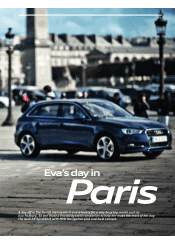 54
54 -
 55
55 -
 56
56 -
 57
57 -
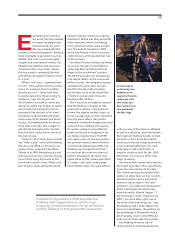 58
58 -
 59
59 -
 60
60 -
 61
61 -
 62
62 -
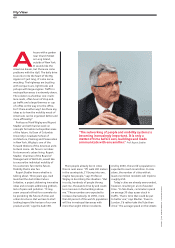 63
63 -
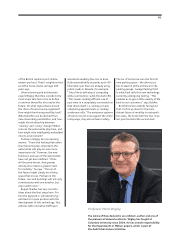 64
64 -
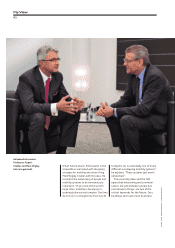 65
65 -
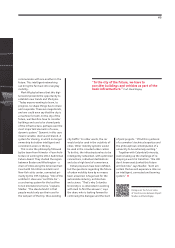 66
66 -
 67
67 -
 68
68 -
 69
69 -
 70
70 -
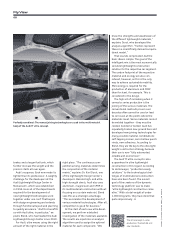 71
71 -
 72
72 -
 73
73 -
 74
74 -
 75
75 -
 76
76 -
 77
77 -
 78
78 -
 79
79 -
 80
80 -
 81
81 -
 82
82 -
 83
83 -
 84
84 -
 85
85 -
 86
86 -
 87
87 -
 88
88 -
 89
89 -
 90
90 -
 91
91 -
 92
92 -
 93
93 -
 94
94 -
 95
95 -
 96
96 -
 97
97 -
 98
98 -
 99
99 -
 100
100 -
 101
101 -
 102
102 -
 103
103 -
 104
104 -
 105
105 -
 106
106 -
 107
107 -
 108
108 -
 109
109 -
 110
110 -
 111
111 -
 112
112 -
 113
113 -
 114
114 -
 115
115 -
 116
116 -
 117
117 -
 118
118 -
 119
119 -
 120
120 -
 121
121 -
 122
122 -
 123
123 -
 124
124 -
 125
125 -
 126
126 -
 127
127 -
 128
128 -
 129
129 -
 130
130 -
 131
131 -
 132
132 -
 133
133 -
 134
134 -
 135
135 -
 136
136 -
 137
137 -
 138
138 -
 139
139 -
 140
140 -
 141
141 -
 142
142 -
 143
143 -
 144
144 -
 145
145 -
 146
146 -
 147
147 -
 148
148 -
 149
149 -
 150
150 -
 151
151 -
 152
152 -
 153
153 -
 154
154 -
 155
155 -
 156
156 -
 157
157 -
 158
158 -
 159
159 -
 160
160 -
 161
161 -
 162
162 -
 163
163 -
 164
164 -
 165
165 -
 166
166 -
 167
167 -
 168
168 -
 169
169 -
 170
170 -
 171
171 -
 172
172 -
 173
173 -
 174
174 -
 175
175 -
 176
176 -
 177
177 -
 178
178 -
 179
179 -
 180
180 -
 181
181 -
 182
182 -
 183
183 -
 184
184 -
 185
185 -
 186
186 -
 187
187 -
 188
188 -
 189
189 -
 190
190 -
 191
191 -
 192
192 -
 193
193 -
 194
194 -
 195
195 -
 196
196 -
 197
197 -
 198
198 -
 199
199 -
 200
200 -
 201
201 -
 202
202 -
 203
203 -
 204
204 -
 205
205 -
 206
206 -
 207
207 -
 208
208 -
 209
209 -
 210
210 -
 211
211 -
 212
212 -
 213
213 -
 214
214 -
 215
215 -
 216
216 -
 217
217 -
 218
218 -
 219
219 -
 220
220 -
 221
221 -
 222
222 -
 223
223 -
 224
224 -
 225
225 -
 226
226 -
 227
227 -
 228
228 -
 229
229 -
 230
230 -
 231
231 -
 232
232 -
 233
233 -
 234
234 -
 235
235 -
 236
236 -
 237
237 -
 238
238 -
 239
239 -
 240
240 -
 241
241 -
 242
242 -
 243
243 -
 244
244 -
 245
245 -
 246
246 -
 247
247 -
 248
248 -
 249
249 -
 250
250 -
 251
251 -
 252
252 -
 253
253 -
 254
254 -
 255
255 -
 256
256 -
 257
257 -
 258
258 -
 259
259 -
 260
260 -
 261
261 -
 262
262 -
 263
263 -
 264
264 -
 265
265 -
 266
266 -
 267
267 -
 268
268 -
 269
269 -
 270
270 -
 271
271 -
 272
272 -
 273
273 -
 274
274 -
 275
275 -
 276
276 -
 277
277 -
 278
278 -
 279
279 -
 280
280 -
 281
281 -
 282
282 -
 283
283 -
 284
284 -
 285
285
 |
 |

“The networking of people and mobility systems is
becoming increasingly important. It is only a
matter of time before cars, buildings and roads
communicate with one another.” Prof. Rupert Stadler
A house with a garden
near Church Street
on Long Island,
outside of New York.
It sounds like the
American dream, but there are some
problems with the idyll. The daily drive
to work or into the heart of the Big
Apple isn’t just long, it’s also nerve-
wracking. The highways are bustling
with compact cars, light trucks and
pickups with large engines. Trac in
metropolitan areas is extremely dense.
The solution is a familiar one: multi-
lane roads, often hours of stop-and-
go trac and a large thermos or cup
of coee on the way in to the oce.
Isn’t there another way? Are there any
ideas as to how the mobility needs of
Americans can be organized better and
more eciently?
Professors Mark Wigley and Rupert
Stadler are both hard at work on
con cepts for livable metropolitan areas
of the future. As Dean of Columbia
University’s Graduate School of
Archi tecture, Planning and Preservation
in New York, Wigley is one of the
forward thinkers of the American archi-
tectural scene. His focus is on ideas
for tomor row’s urban living. Rupert
Stadler, Chairman of the Board of
Management of AUDI AG, would like
to ensure the individual mobility of
his customers far
into the future.
Mobility that is also fun.
Rupert Stadler knows what he is
talking about. Three years ago, Audi
launched the Audi Urban Future
Initiative, a project delivering innovative
ideas and concepts addressing gridlock,
lack of space and pollution. “It may
seem unusual at first for a carmaker to
be pondering the future of cities and
urban structures. But we have to start
looking beyond the horizon of our own
product world,” says the Audi CEO.
More people already live in cities
than in rural areas. “If I walk 100 meters
in the countryside, I’ll bump into one,
maybe two people,” says Professor
Wigley in describing the situation. “But
in a city, hundreds of people throng
past me, thousands drive by and count-
less more are in the buildings above
me.” These numbers are expected to
increase dramatically. In 2030, more
than 60 percent of the world’s population
will live in metropolitan areas with
more than eight million residents.
And by 2050, the world’s population is
expected to reach nine billion. In Asia
alone, the number of cities with at
least one million residents will triple to
roughly 650.
Today’s cities are already overcrowded,
however, resulting in a lot of wasted
time. “In São Paulo, commuters spend
on average 30 days a year stuck in
trac. That is time that could be put
to better use,” says Stadler. “Even in
London, I’d rather take the Tube than
drive.” The average speed on the streets
P H O T O S | DET K E M P K E /D O U B L E T P H OT O G R A P H E R S
My View
60
